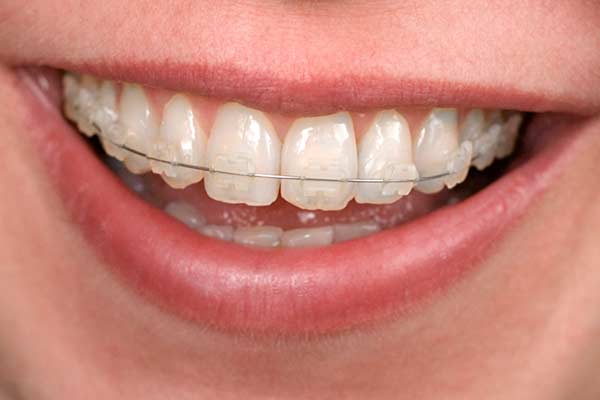Comprehensive Guide to Orthodontics Treatments for Remedying Dental Imbalances
Understanding the complexities of each procedure, including their systems, advantages, and potential disadvantages, is crucial in making informed choices regarding one's orthodontic therapy. As we browse with the thorough overview to orthodontic procedures for remedying oral misalignments, the elaborate details of each technique will unfold, losing light on the course towards a unified and useful oral alignment.
Orthodontic Procedures Introduction

In enhancement to standard braces and clear aligners, orthodontists might also suggest other treatments like headwear, palatal expanders, or retainers to attend to certain alignment problems (cumming braces). These procedures are customized to each individual's distinct demands and might include a mix of treatments to achieve the wanted outcomes. Regular adjustments and monitoring are important components of orthodontic treatment to make certain development gets on track and to make any needed modifications along the road. By undertaking orthodontic procedures, clients can not just achieve a straighter smile yet likewise boost their overall dental health and feature.
Typical Braces: Exactly How They Function
When thinking about orthodontic therapies for dental misalignments, traditional dental braces stand out as a time-tested approach for correcting teeth placing. Conventional braces contain braces, cords, and bands that function with each other to use constant stress on the teeth, slowly moving them into the preferred positioning. The braces are attached to the teeth making use of a special adhesive, and the cables are threaded through the braces. By adjusting the tension of the cords, orthodontists can manage the instructions and pressure applied to each tooth, directing them into appropriate placement in time.
As pressure is applied to the teeth through the braces, the bone surrounding the teeth is reshaped to sustain the brand-new tooth positions. Clients will need normal changes at the orthodontist's office to make sure the dental braces proceed to use the proper pressure for reliable teeth motion.
Unnoticeable Aligners: Pros and Disadvantages
These clear, personalized trays are essentially unseen when used, making them an attractive option for individuals seeking a much more cosmetically pleasing orthodontic therapy. Individuals can eliminate the aligners before consuming or brushing their teeth, reducing the threat of food getting stuck in the device and simplifying the cleansing process.

Surgical Orthodontic Options
Surgical interventions in orthodontics present practical choices for resolving complex oral misalignments that may not be efficiently fixed with traditional orthodontic treatments. While invisible aligners and traditional braces can deal with several orthodontic concerns, specific situations require medical treatment to accomplish ideal results. Surgical orthodontic alternatives are commonly advised for serious malocclusions, considerable jaw inconsistencies, and cases where the underlying bone framework requires modification to achieve correct positioning.
One typical surgical orthodontic treatment is orthognathic surgical procedure, which includes repositioning the jaws to fix functional issues such as trouble speaking or chewing. This surgery is often executed in cooperation with an orthodontist that assists straighten the teeth prior to and after the treatment. Surgical orthodontics may also entail treatments to reveal influenced teeth, get rid of excess gum tissue, or reshape the jawbone to create a more harmonious facial profile.
Before thinking about medical orthodontic alternatives, individuals undertake a detailed examination to establish the need and possible benefits of such treatments. orthodontist. While surgical procedure may appear overwhelming, it can substantially improve both the function and aesthetics of the smile in situations where conventional orthodontic therapies fail
Retainers and Post-Treatment Treatment

Post-treatment treatment includes following the orthodontist's guidelines faithfully. This may include appropriate oral health practices, attending follow-up consultations, and putting on the retainers as suggested. Failure to adhere to post-treatment care directions can lead to relapse, where the teeth slowly relocate back in the direction of their initial placements. Regular retainer wear, excellent dental health, and normal oral exams are essential for preserving the outcomes attained via orthodontic surgery and making certain the lasting stability of the remedied dental placement.
Verdict
In final thought, orthodontic procedures offer numerous choices for correcting oral misalignments. Surgical orthodontic options are readily available for extra serious misalignments. In general, orthodontic procedures can properly enhance oral health and wellness and aesthetic other appearance.
As we browse with the comprehensive overview to orthodontic procedures for correcting oral misalignments, the detailed information of each technique will certainly unfold, losing light on the course toward a unified and practical oral alignment. - orthodontics
One of the most usual orthodontic treatments is the usage of braces, which are composed of steel brackets and cords that apply mild pressure to progressively move teeth into the wanted placement.When thinking about orthodontic treatments for dental imbalances, standard dental braces stand out as a reliable approach for correcting teeth positioning. Furthermore, unseen aligners may not be suitable for complex orthodontic issues that need more considerable teeth motion, as they are commonly advised for mild to moderate cases. Retainers are custom-made orthodontic devices designed to hold teeth in their fixed positions after the completion of orthodontic treatment.